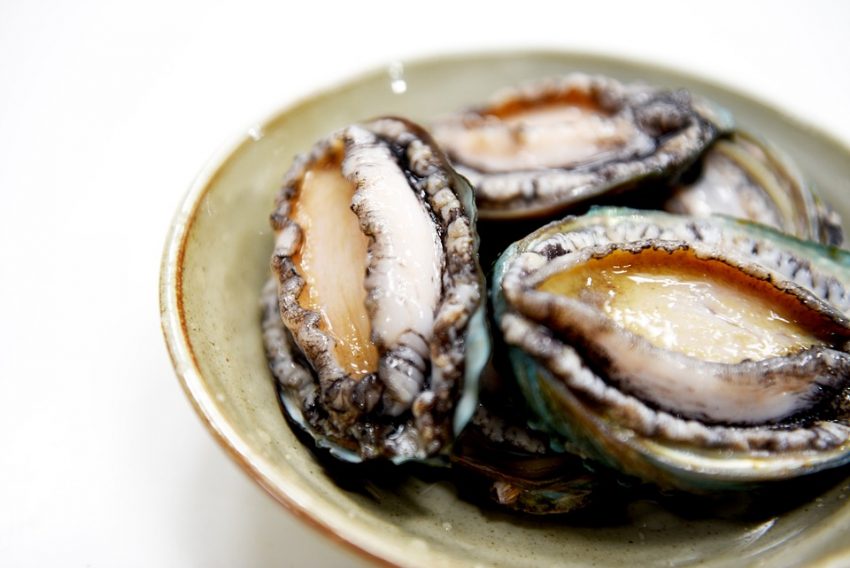The abalone is one of the most prized mollusks among fishermen and traders because it has several uses in the local cuisine of many countries. Due to its high demand, breeding techniques have even been developed to reproduce the most popular individuals.
There are more than 100 species of abalone. They all belong to the genus Haliotis, a monotypic gastropod that inhabits tropical waters around the world.
How Does an Abalone Look Like?
The abalone has a flat, long, oval shell with a spiral tip. This protective material is hard and irregular, with a texture similar to rocks at the bottom of the sea. Some species, however, display bright and brilliant colors.
The shell has several grooves in the form of spirals and some openings on the edges that directly touch the fleshy mass. Like a snail, the abalone’s body is divided behind the protection into legs (moving muscles), visceral mass (internal organs), and mantle (which secretes the shell).
At first glance, it looks much like a mussel, but the main difference is that it has only one shell, with a fleshy mass exposed on the other side. Abalone are not dangerous, and their shells are visible. Therefore, they are unlikely to be eaten by predators.
Types of Abalone
Different species of abalone differ in characteristics, size, color, and distribution. Among them, the most important and well-known in the world are the following:
Haliotis rufescens: It is characterized by its brick-colored shell and is native throughout the Pacific Ocean. The maximum size is 30 cm in diameter.
Haliotis corrugata: It is distributed from California to Baja California south of Bahia Tortuga. The average diameter is 18 cm, with a wrinkled shell and opaque colors (green, brown, or tan).
Haliotis fulgens: This species gets its name from the bright green and blue coloration inside its shell. Its size can be nearly 25 cm in diameter. It is found from southern California to Magdalena Bay in Baja, California.
Haliotis gigantea: It is one of the longest specimens and appears large. It can be nearly 20 cm in diameter and has a red or brown shell. It is found in the waters of Japan and Korea.
Haliotis disks: Known for its iridescent shell colors, it grows up to 18 cm in diameter. It is found from Siberia to China, but its habitat is concentrated in coastal areas of Asia. In fact, that is why it is a popular food in that region.
Abalone Behavior and Food Habits
Abalones spend most of the day stuck to the hard surface of the seafloor, motionless. At dawn, however, they move slowly to search for food. By doing so, they can avoid most foreign enemies.
Because these mollusks are herbivores, they feed on various microalgae and large algae that grow in the ocean. They have preferences for different species of green, brown, and red algae, but there are no restrictions on their diet.

Why Are They Important to Humans?
There are more than 100 species of abalone in the world. Of these, only about 15 species are edible.
Although they are few, their demand is relatively high because they provide a variety of nutrients such as protein, carotene, calcium, iron, potassium, zinc, and iodine. Moreover, its taste is sweet and delicate, with a firm, octopus-like texture.
Price
Although it is highly nutritious and tastes great, it is quite expensive and is not a product that the average person can afford. This is because it takes four to five years to reach average product size. It also requires precise, well-controlled, and hygienic conditions. Otherwise, the flavor may be compromised, as it depends significantly on the quality of the crop.
In some cultures, it is also considered to have therapeutic and aphrodisiac properties and high nutritional value. As a result, its popularity has grown, and some countries have encouraged the development of cultivation facilities to sell it.

